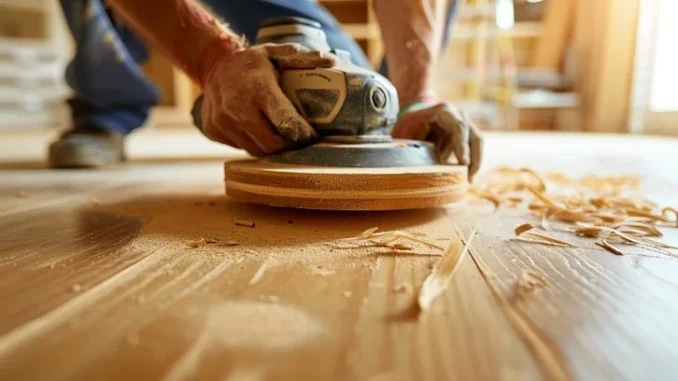
Plywood is a versatile and durable material used in many construction and woodworking projects, from furniture to cabinetry and beyond. If you are working with plywood and wondering, «Can you sand plywood?» you are in the right place. Sanding plywood is not only possible, but it’s a crucial part of getting a smooth, professional-looking finish. In this detailed guide, we’ll walk you through everything you need to know about sanding plywood, from basic techniques to advanced tips that will help you achieve a smooth surface and avoid common mistakes.
How to Sand Plywood: Step-by-Step Guide
Sanding plywood is an essential part of finishing any project. Whether you are preparing the surface for painting, staining, or simply smoothing out rough spots, understanding how to sand plywood properly will make a significant difference in the final outcome of your project. Here’s a comprehensive step-by-step guide to sanding plywood effectively.
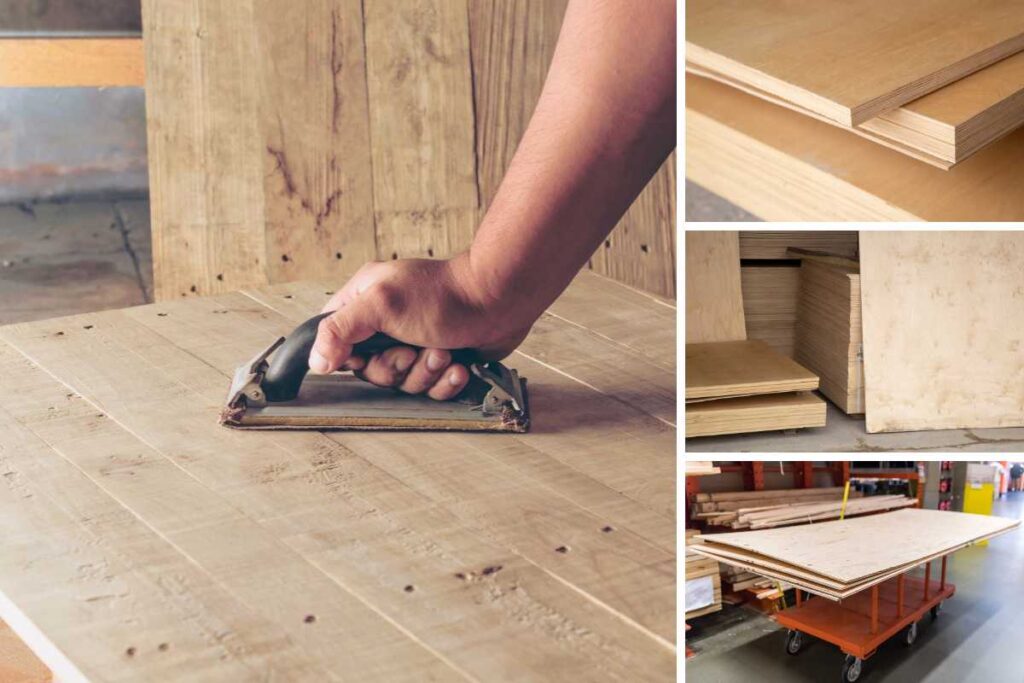
What Tools Do You Need to Sand Plywood?
To start sanding plywood, you’ll need the right tools and materials to ensure an efficient and clean process. Below is a list of essential items:
- Sandpaper: The most important tool for the job. Sandpaper comes in different grits, which are suited for different stages of sanding. Coarse grit is used for rough sanding, medium grit for smoothing, and fine grit for achieving a smooth surface before applying the final finish.
- Coarse grit (40-60 grit): This grit is ideal for rough sanding and removing imperfections like splinters, glue residue, and rough spots on the plywood surface.
- Medium grit (80-120 grit): This is the transition grit that smooths out the surface after the coarse grit has removed the rough spots.
- Fine grit (150-220 grit): Use fine grit to polish the surface to perfection and prepare it for painting, staining, or any other finish.
- Power Sanders: If you’re working with a large surface or need to speed up the sanding process, power sanders are incredibly useful.
- Orbital Sanders are great for general sanding and will leave a smooth finish.
- Random Orbital Sanders are ideal for achieving a smoother, swirl-free finish.
- Belt Sanders are helpful for heavy-duty sanding, but they require more precision.
- Dust Mask and Safety Gear: Sanding generates a lot of dust, so it’s crucial to wear a dust mask and protective eyewear. You might also consider ear protection if you’re using loud power sanders for extended periods.
By having the right tools, you ensure that your sanding process is smooth, efficient, and effective.
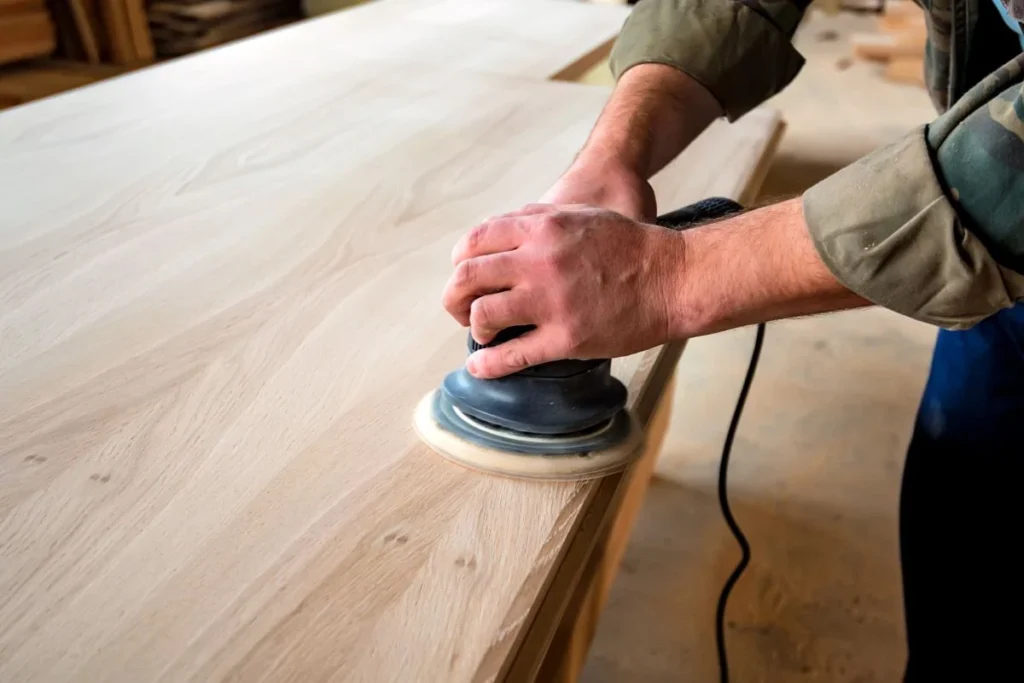
Coarse Grit Sandpaper for Rough Surfaces
When you begin sanding plywood, the first thing you need to focus on is the rough spots. Can you sand plywood to remove imperfections? Absolutely. Begin with coarse grit sandpaper (40-60 grit) to tackle those imperfections. This grit is perfect for getting rid of rough spots, glue marks, splinters, and uneven areas that can hinder the smoothness of the final surface.
Start with gentle pressure, especially if you are using a power sander. Move the sander in the direction of the grain to avoid scratching the surface in a way that will be hard to fix later. Focus on the areas that need the most attention and try to blend them with the surrounding surface. Take care not to over-sand, especially in areas where the wood is thinner, as this can damage the veneer and leave exposed layers.
Medium Grit for Smoothing Out the Surface
Once you’ve worked through the rough patches, it’s time to switch to a medium grit sandpaper (80-120 grit). Medium grit is perfect for removing the marks left by the coarse grit and smoothing out the surface of the plywood.
This phase of sanding should be done with overlapping strokes to ensure even coverage. The key is to maintain a consistent motion while focusing on areas that may still feel rough or uneven. Sanding in circular motions or with a back-and-forth motion will allow you to blend the coarse sanding marks smoothly into the surface.
One important tip is to always keep an eye on the progress as you move from coarse to medium grit. If you skip the medium grit step and go straight to fine grit, you risk leaving scratches from the coarse grit behind. Sanding slowly and thoroughly in each stage will give you a much better result in the end.
Fine Grit Sandpaper for a Smooth Finish
After you’ve achieved a good surface with the medium grit, it’s time to finish up with fine grit sandpaper (150-220 grit). This is where you can really make a difference in the smoothness of the surface. Fine grit is used to create the final smoothness and to prepare the plywood for painting, staining, or applying any finishing treatment.
At this stage, use light pressure, allowing the sandpaper to gently glide over the plywood surface. Longer strokes are better, as they help to create a seamless finish. Work with the grain of the plywood to avoid any unnecessary scratches or marks that can appear if you go against the grain.
By this point, your plywood should be smooth to the touch and ready for any finish you plan to apply. Always remember to clean the surface thoroughly after sanding to remove dust before proceeding to the next steps in your project.
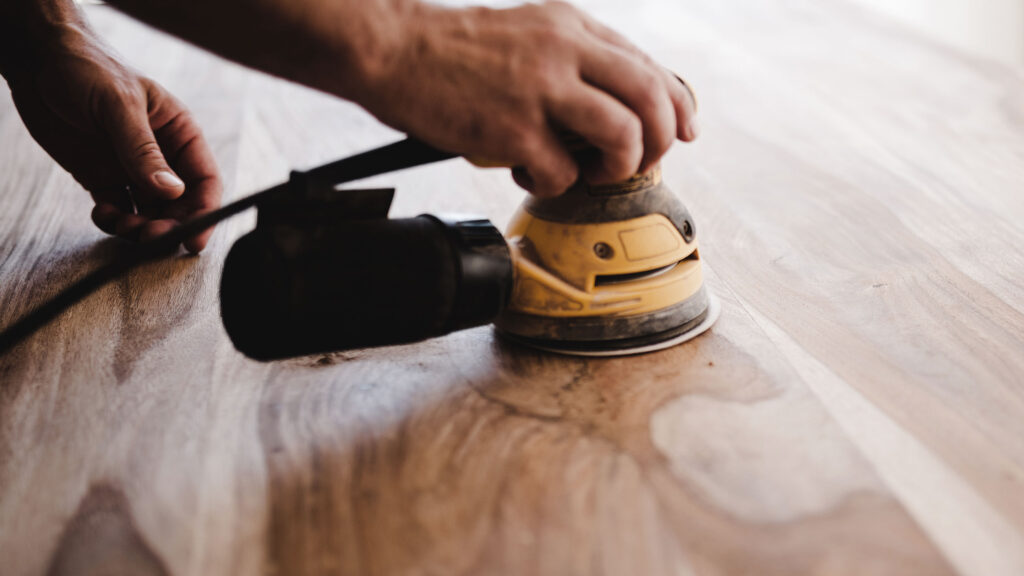
Can You Sand Plywood Smooth? Tips and Techniques
When it comes to achieving a perfectly smooth surface, you might ask yourself: Can you sand plywood smooth enough for a flawless finish? The answer is definitely yes, but achieving this requires the right approach and technique. Below are some tips that will help you ensure your plywood is as smooth as possible.
Avoid Over-Sanding and Veneer Damage
While it’s tempting to keep sanding until you achieve absolute perfection, it’s important to avoid over-sanding, especially if you’re working with plywood that has a thin veneer. Over-sanding can result in exposing the layers beneath the veneer or damaging the veneer itself. Once you start to feel the surface is smooth and even, stop sanding.
If you’re working on delicate plywood or a surface that is already quite smooth, try using finer grits from the start to avoid excessive wear. Going from coarse to fine grit too quickly can sometimes weaken the plywood veneer, so always take the time to assess the progress.
How to Smooth Out Plywood Without Damaging the Surface
If you’re asking, Can you smooth out plywood without causing any damage, the answer is yes – but with caution. The trick is to use lighter pressure when sanding with fine grit paper. Plywood is typically made up of multiple thin layers of wood veneer, and it can be easy to damage these layers if you apply too much force.
When smoothing out plywood, focus on gentle sanding strokes and take your time to achieve the best results. If you’re using a power sander, avoid pressing too hard. The goal is to let the sandpaper do the work while you guide the tool across the surface.
Test Sanding on Scrap Plywood
Before diving into the main project, it’s always a good idea to perform a test sanding on a scrap piece of plywood. This allows you to experiment with the sanding techniques, adjust your approach if necessary, and ensure that your desired finish is achievable without damaging the plywood. Additionally, it helps to get a sense of how much sanding is needed to achieve a perfectly smooth surface without over-sanding.
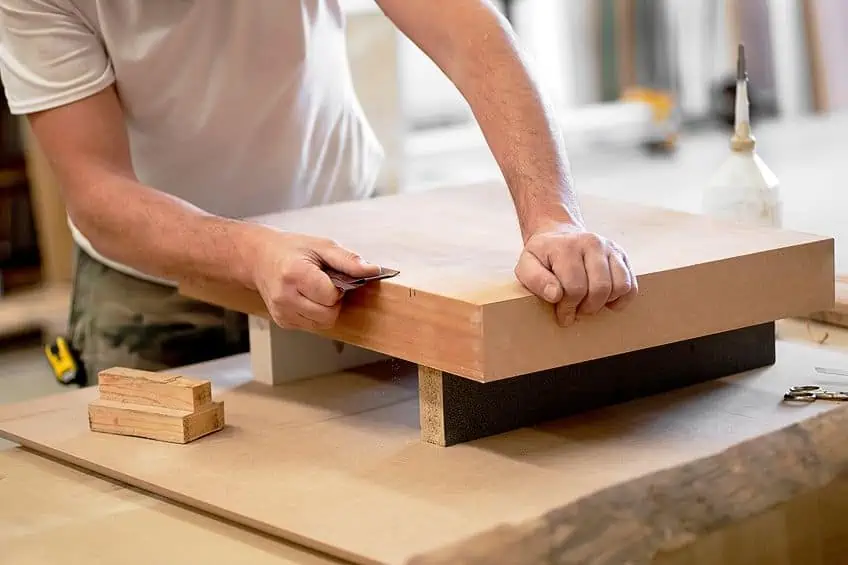
Sanding Plywood for a Perfect Finish: Step-by-Step Process
Now that we’ve covered the essential techniques, here’s a quick recap of how to sand plywood smooth for a perfect finish:
- Clean the Surface: Remove any dust or debris from the plywood before beginning the sanding process.
- Coarse Grit Sanding: Start with coarse grit (40-60) to tackle rough areas and imperfections.
- Medium Grit Sanding: Move to medium grit (80-120) to smooth out the surface and remove the marks from the coarse grit.
- Fine Grit Sanding: Finish up with fine grit (150-220) to achieve a smooth, flawless surface.
- Final Cleaning: Clean the plywood again to remove any dust before applying a finish.
By following these steps carefully, you can ensure your plywood is smooth, even, and ready for whatever finishing treatment you plan to apply.
Conclusion: Is Sanding Plywood Worth the Effort?
In conclusion, sanding plywood is not only possible but essential for achieving a smooth and professional finish. Whether you are preparing it for painting, staining, or simply smoothing it out for a project, the process is relatively straightforward when you follow the right steps. With the proper tools, techniques, and attention to detail, you can easily sand plywood smooth and create a surface that looks great and performs well.
Key Takeaways:
- Yes, you can sand plywood and achieve a smooth, professional finish with the proper tools and techniques.
- The process involves using a progression of grits: coarse grit for rough sanding, medium grit for smoothing, and fine grit for a polished finish.
- Testing your sanding techniques on scrap plywood helps avoid mistakes and ensures the best possible result.
Now that you have the full guide to how to sand plywood, it’s time to start sanding your next project with confidence and precision. Happy sanding!